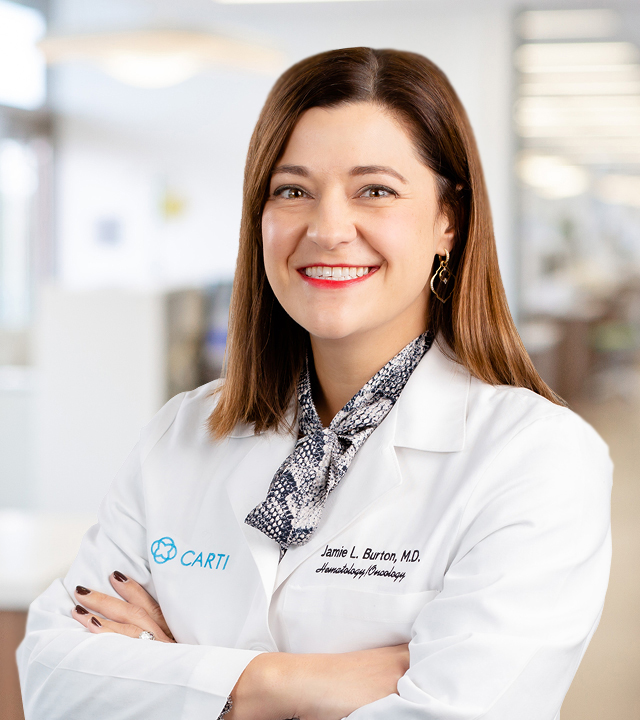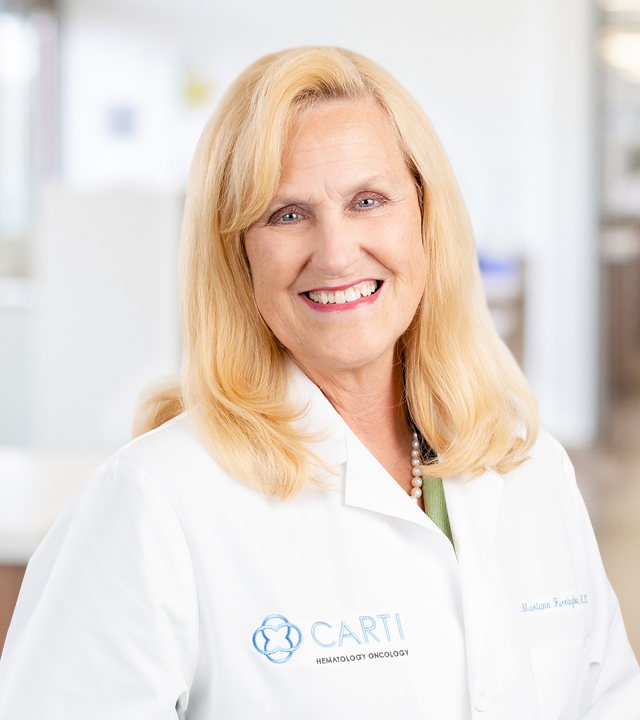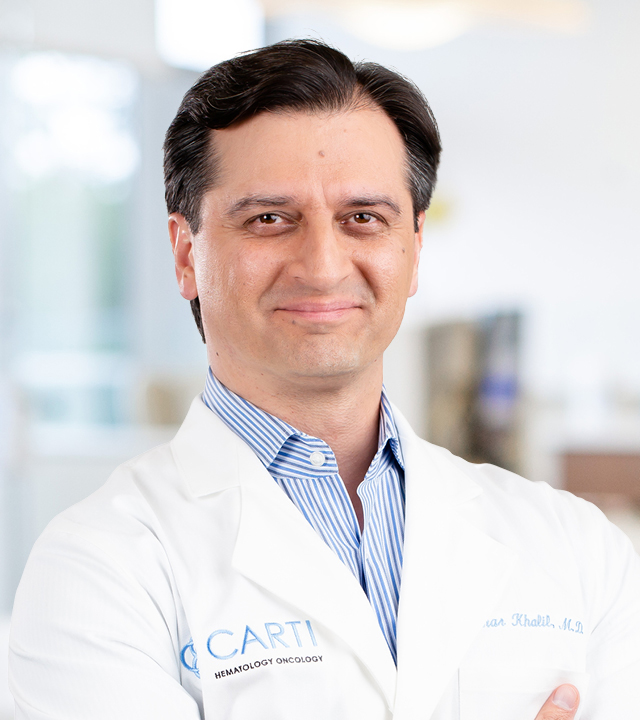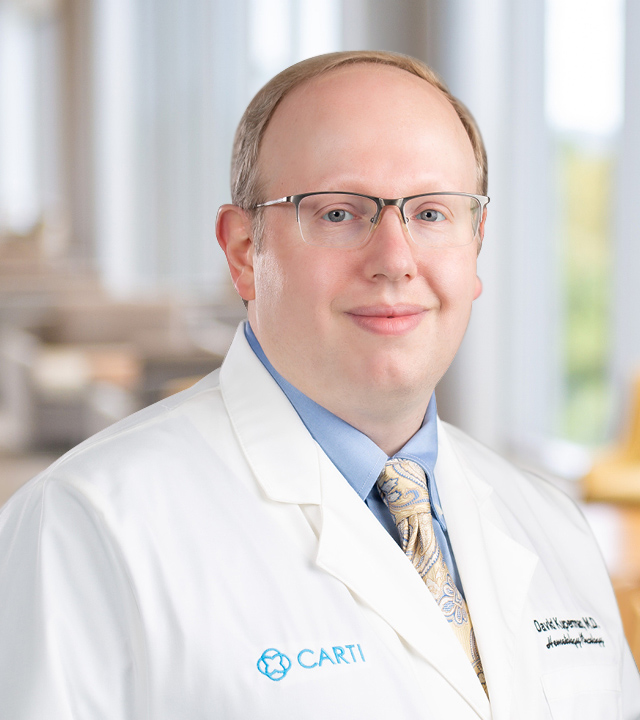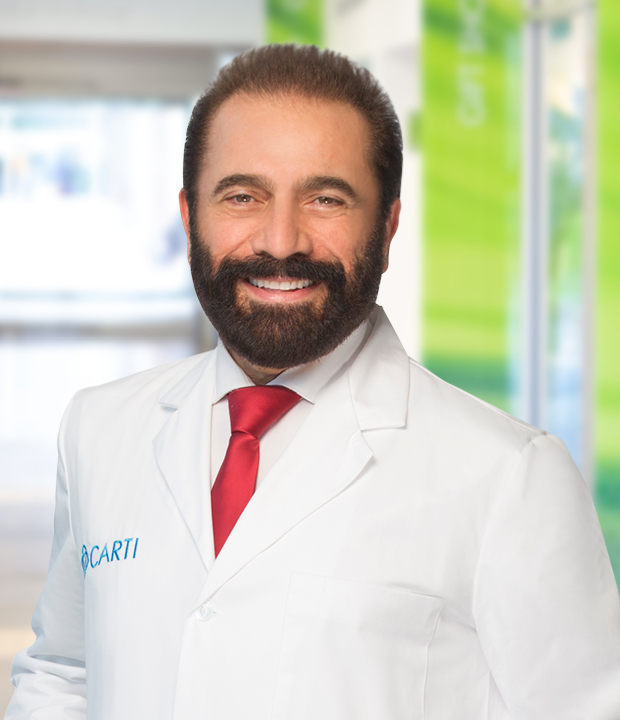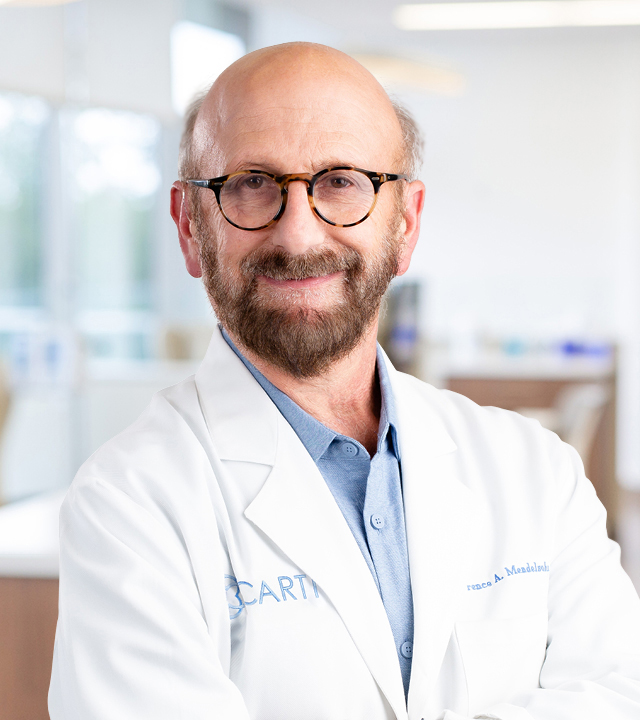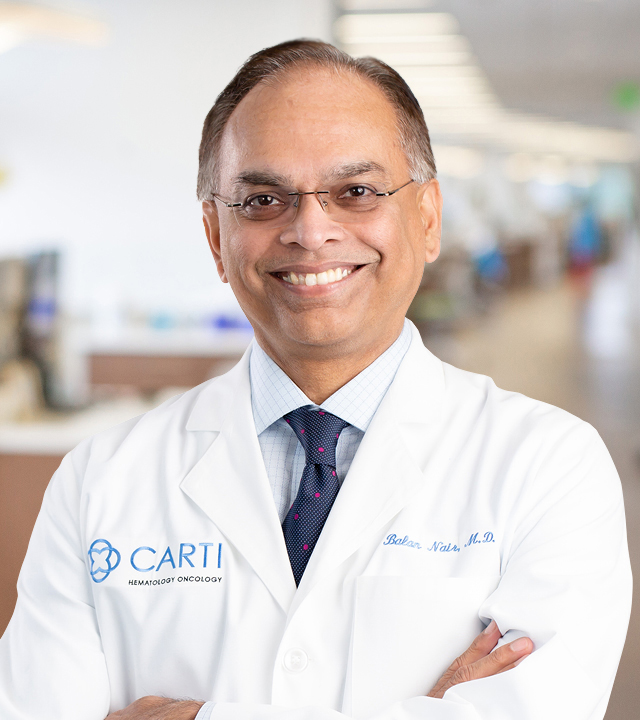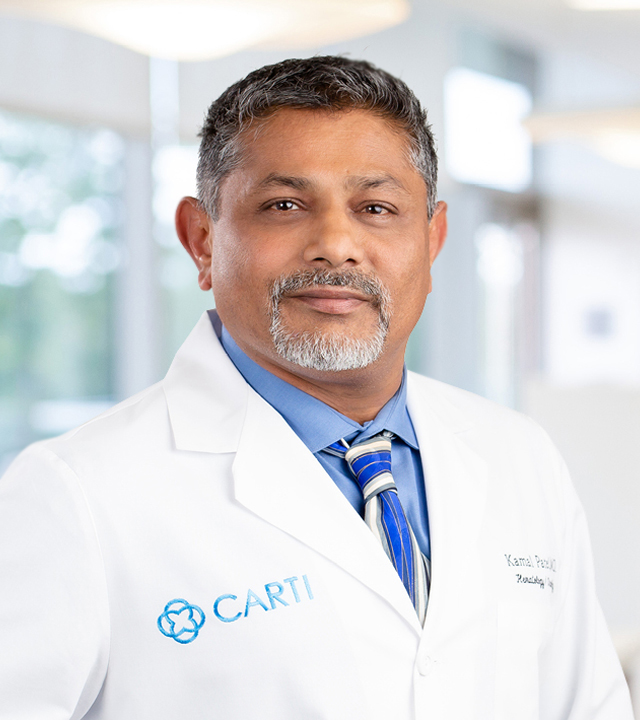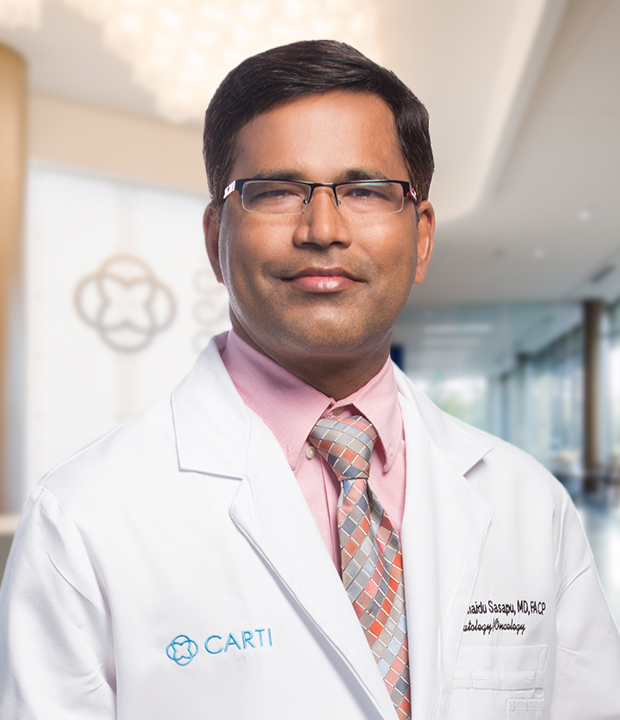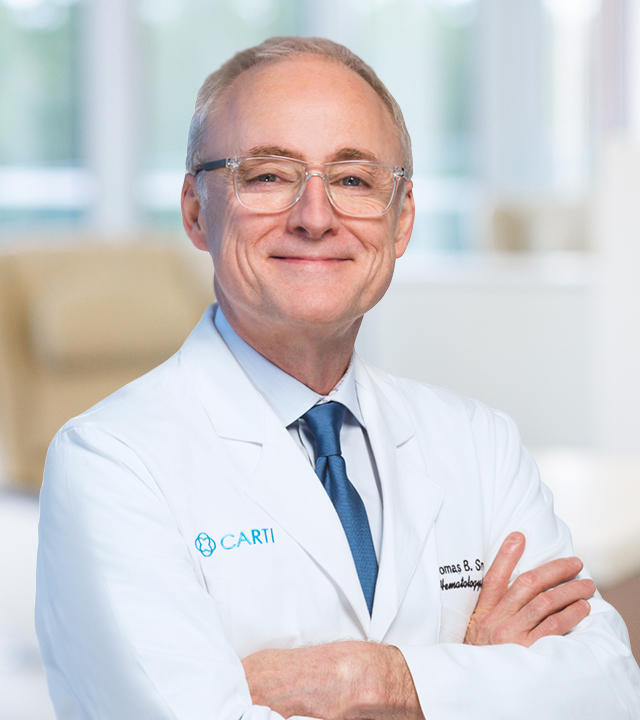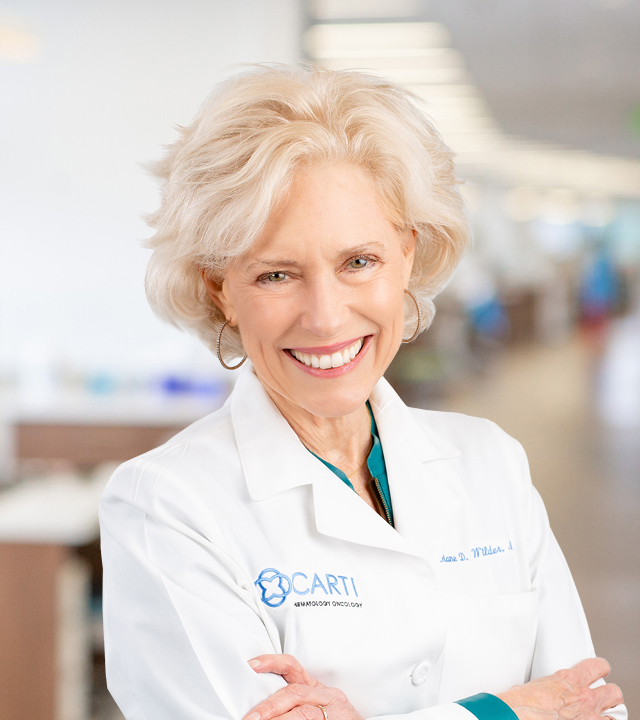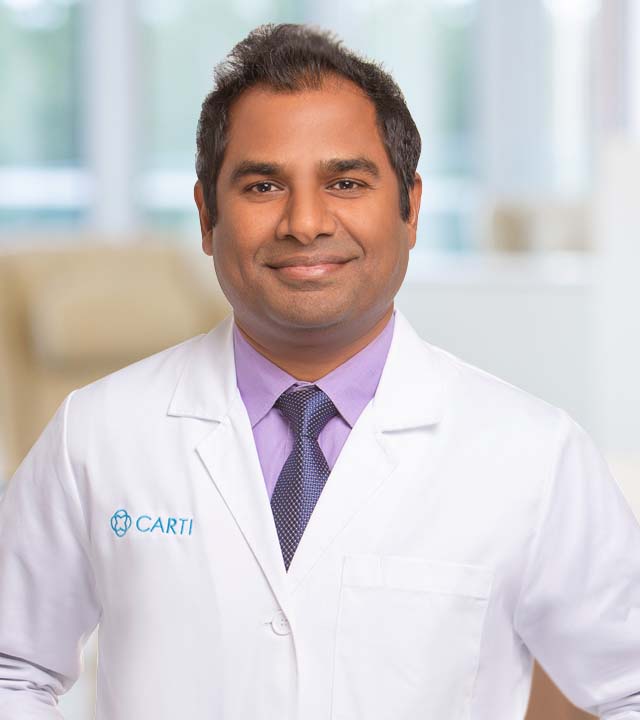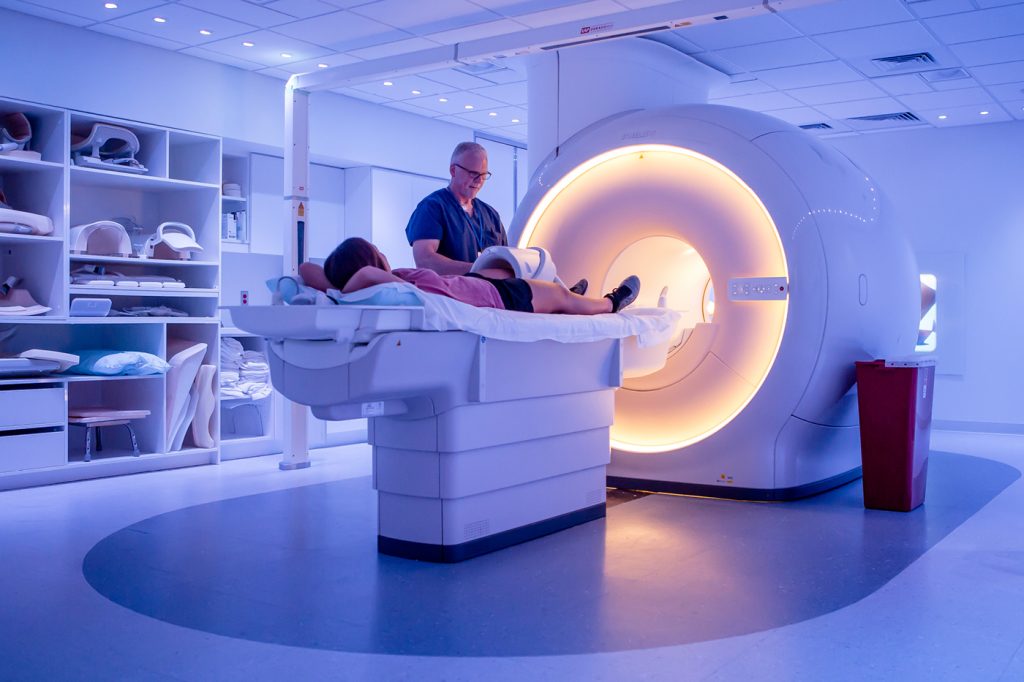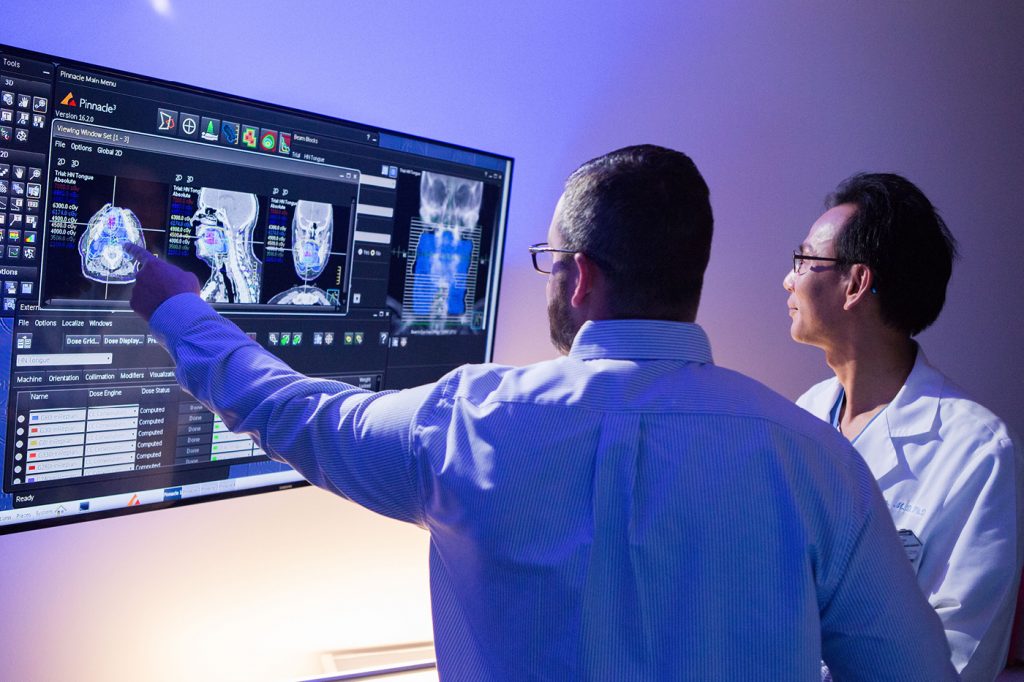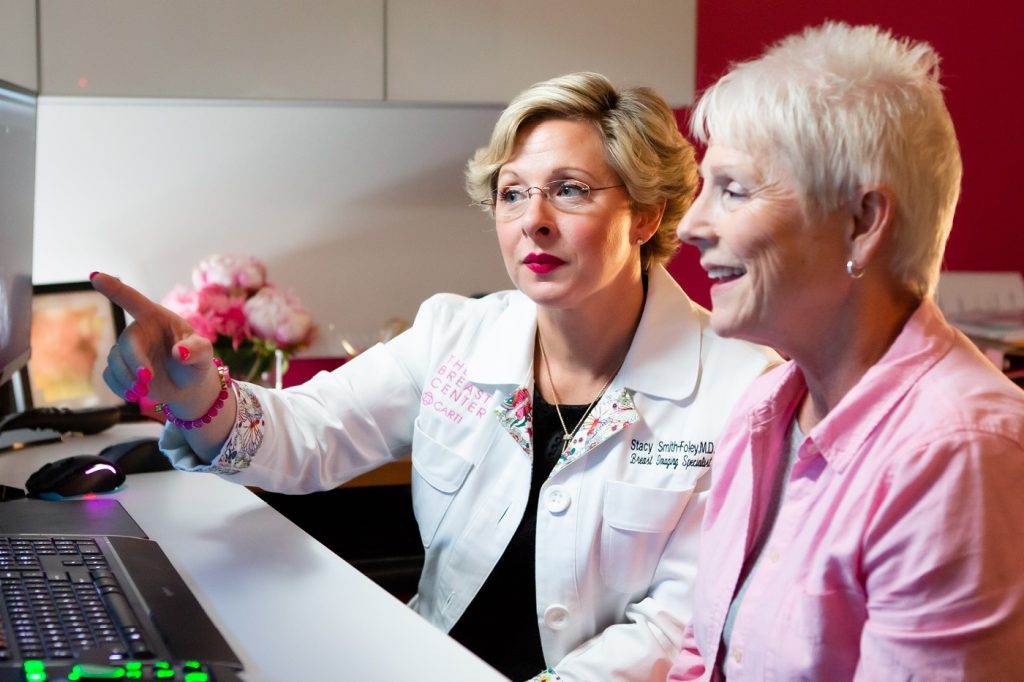CARTI’s team of expert medical oncologists have the collective experience to treat all types of adult cancers and blood disorders. Together they utilize the most advanced forms of medical oncology, including surgical oncology and chemotherapy to create an individualized treatment plan for each patient.
Understanding Chemotherapy
One of the predominant forms of treatment in cancer care is chemotherapy (also called chemo). This is a type of cancer treatment that uses drugs to destroy cancer cells. Chemotherapy works by stopping or slowing the growth of cancer cells, which grow and divide quickly.
But it can also harm healthy cells that divide quickly, such as those that line your mouth and intestines, or cause your hair to grow. Damage to healthy cells may cause side effects. Often, side effects get better, or go away after chemotherapy is over.
Depending on your type of cancer and how advanced it is, chemotherapy can:
- Cure cancer – when chemotherapy destroys cancer cells to the point that your doctor can no longer detect them in your body and they will not grow back.
- Control cancer – when chemotherapy keeps cancer from spreading, slows its growth, or destroys cancer cells that have spread to other parts of your body.
- Ease cancer symptoms (also called palliative care) – when chemotherapy shrinks tumors that are causing pain or pressure.
Benefits of Chemotherapy
Sometimes, chemotherapy is used as the only cancer treatment. But more often you will receive chemotherapy treatment along with surgery and radiation therapy. With the use of chemotherapy, doctors can:
- Make a tumor smaller before surgery or radiation therapy. This is called neo-adjuvant chemotherapy.
- Destroy cancer cells that may remain after surgery or radiation therapy. This is called adjuvant chemotherapy.
- Help to make radiation therapy more effective.
- Destroy cancer cells that have come back (recurrent cancer), or that have spread to other parts of your body (metastatic cancer).
Drug Choices
The type of chemotherapy drugs your doctor chooses for your particular diagnosis depends upon a few factors, including:
- The type of cancer you have. Some types of chemotherapy drugs are used for many types of cancer. Other drugs are used for just one or two types of cancer.
- Whether you have had chemotherapy before.
- Whether you have other health problems, such as diabetes or heart disease.
Where Treatment Happens
The geographic place where you receive chemotherapy treatments can vary, depending on the regimen selected by you and your physician. You may receive chemotherapy during a hospital stay, at home, or in a doctor’s office, clinic or outpatient unit in a hospital (which means you do not have to stay overnight).
No matter where you go for chemotherapy, the doctors and nurses at CARTI will keep a close watch for side effects, quickly making any needed drug changes based on your reaction to the drugs.
The frequency and interval of chemotherapy treatments also differs from patient to patient. As treatment schedules for chemotherapy vary widely, how often and how long you receive chemotherapy treatments depends on:
- Your type of cancer and how advanced it is
- The goals of treatment (whether chemotherapy is used to cure your cancer, control its growth or ease the symptoms)
- The type of chemotherapy
- How your body reacts to chemotherapy
How Chemotherapy is Given
A common way to receive chemotherapy is in cycles. A cycle is a period of chemotherapy treatment followed by a period of rest. For instance, you might receive one week of chemotherapy followed by three weeks of rest. These four weeks make up one cycle. The rest period gives your body a chance to build new healthy cells.
Chemotherapy may be given in many ways, including:
- Injection. The chemotherapy is given by a shot in a muscle in your arm, thigh or hip, or right under the skin in the fatty part of your arm, leg or belly.
- Intra-arterial (IA). The chemotherapy goes directly into the artery that is feeding the cancer.
- Intraperitoneal (IP). The chemotherapy goes directly into the peritoneal cavity (the area that contains organs such as your intestines, stomach, liver, and ovaries).
- Intravenous (IV). The chemotherapy goes directly into a vein.
- Topically. The chemotherapy comes in a cream that you rub onto your skin.
- Orally. The chemotherapy comes in pills, capsules or liquids that you swallow.
Chemotherapy Through an IV
Chemotherapy is often given through a thin needle that is placed in a vein on your hand or lower arm. Your nurse will put the needle in at the start of each treatment and remove it when treatment is over. Let your doctor or nurse know right away if you feel pain or burning while you are getting IV chemotherapy.
IV chemotherapy is often given through catheters or ports, sometimes with the help of a pump.
- A catheter is a soft, thin tube. A surgeon places one end of the catheter in a large vein, often in your chest area. The other end of the catheter stays outside your body. Most catheters stay in place until all your chemotherapy treatments are finished. Catheters can also be used for drugs other than chemotherapy and to draw blood. Be sure to watch for signs of infection around your catheter.
- A port is a small, round disc made of plastic or metal that is placed under your skin. A catheter connects the port to a large vein, most often in your chest. Your nurse can insert a needle into your port to give you chemotherapy or draw blood. This needle can be left in place for chemotherapy treatments that are given for more than 1 day. Be sure to watch for signs of infection around your port.
- Pumps are often attached to catheters or ports. They control how much and how fast chemotherapy goes into a catheter or port. Pumps can be internal or external. External pumps remain outside your body. Most people can carry these pumps with them. Internal pumps are placed under your skin during surgery.
When making an appointment, staff members will be able to discuss insurance coverage and ways to make your care affordable. CARTI accepts CareCredit for eligible patients – learn more here.


